Krameria erecta, Littleleaf Ratany
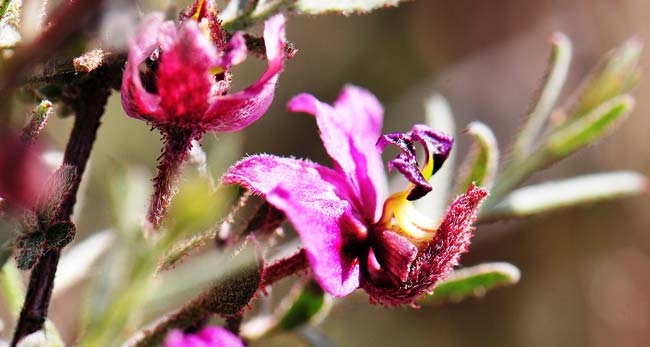
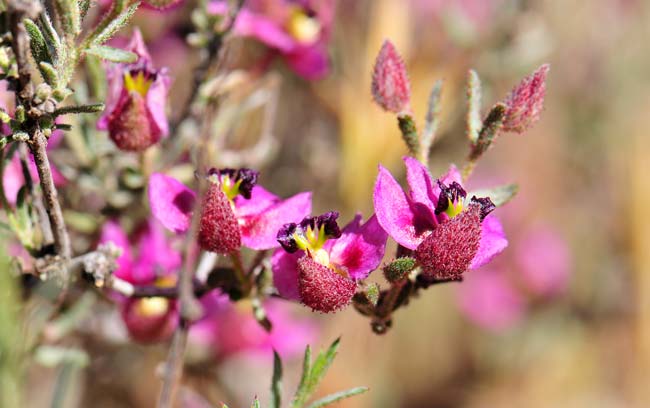
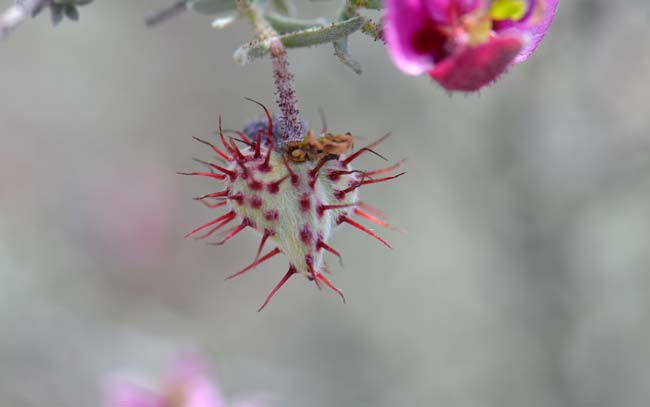
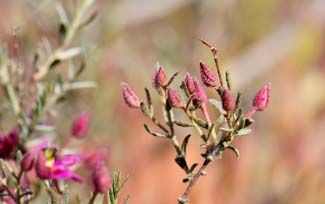
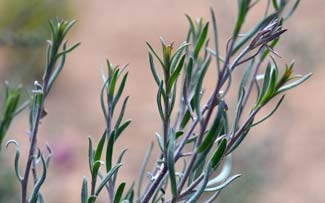
Scientific Name: Krameria erecta
Common Name: Littleleaf Ratany
Also Called: Littleleaf Rhatany, Pima Rhatany, Purple Heather, Range Rhatany, Range Ratany, Range Ratany; (Littleleaf); (Spanish: Cósahui del Norte, Tamichíl, Guisapol Colorado)
Family: Krameriaceae, Ratany Family
Synonyms: (Krameria glandulosa, Krameria imparata, Krameria palmeri, Krameria parvifolia, Krameria parvifolia var. glandulosa, Krameria parvifolia var. imparata)
Status: Native
Duration: Perennial
Size: Up to 3 feet.
Growth Form: Shrub/subshrub; root parasite, erect or ascending, tangled or intricately branched, branches tapered to a sharp-point, branches gray, new stems with variable pubescence strigose, canescent or with silky hairs, bark striped with ridges (striate), .
Leaves: Green or gray-green; alternate, sessile, exstipulate, inconspicuous, linear or linear-lanceolate, fuzzy with dense hairs, margins entire.
Flower Color: Pink, reddish, rose, magenta or violet sepals; small showy flowers, sepals cupped, pink, flag petal with claw, petals 5 glandular pink, triangular, bright pink, 3 upper petals erect, glandular, lower petals glandular, 4 showy stamens, petals and sepals strigose, buds ovate and barely curved, flowers bilateral, fruit heart-shaped, compressed, spine may be scattered with barbs however there is not a hooked barb on the tips of the spines.
Flowering Season: April to October and again in the fall after sufficient rainfall, earlier in Texas; March to October and California; March to May.
Elevation: Up to 5,000 feet.
Habitat Preferences: Dry rocky slopes, ridges and dry chaparral slopes.
Recorded Range: Littleleaf Ratany is found in the southwestern states of AZ, CA, NM, NV, TX and UT. It is also found throughout Baja California and northern Mexico. In Arizona Littleleaf Ratany is found throughout much of the state except the northeast portion.
U.S. Weed Information: No information available.
Invasive/Noxious Weed Information: No information available.
Wetland Indicator: No information available.
Threatened/Endangered Information: No information available.
Comments: Littleleaf Ratany is an inconspicuous intricately branch subshrub. Although the shrub technically has no spines the branches taper down to a sharp point. Krameria species are root parasites surviving when the soil is dry by taking nutrients and water from adjacent plants. They also photosynthesize.
Krameria have an unusual pollination arrangement as the flowers provide oil, not nectar to visiting female bees of the genus Centris. These bees possess adaptations for carrying floral oils as well as pollen and nectar. The oil, mixed with pollen is used to feed their larvae.
Littleleaf Ratany is similar in appearance to White Ratany (Krameria bicolor). Common differences vary across the range of these species and key characteristics in technical journals are not completely reliable. A good distinction between the two species is the shape and spines of the fruit. In White Ratany the fruit is much more globose compared to the heart-shaped compressed fruit of Littleleaf Ratany and the spines on the White Ratany are barbed at the tip and the tip of Littleleaf Ratany does not have a hooked barb. However both species may also have barbs scattered about the spines. Another good characteristic is the shape of the flower buds which are curved upward on White Ratany.
The family Krameriaceae has been taxonomically shuffled around between several families including Fabaceae and Polygalaceae.
Littleleaf Ratany was used as a dermatological aid by the Pima’s and as a red dye by the Papago’s. See ethno-botanical uses at Native American Ethnobotany, University of Michigan, Dearborn.

